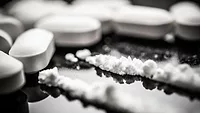Human Decomposition and the Built Environment

All photos courtesy of Jeff Jones
Note: This article contains photos of decomposition that are of a graphical nature and may be disturbing to some readers.
In the world of Forensics, there are four types of death: homicide, suicide, accidental, and natural. Any one of these can become an “Unattended Death” leading to advanced human decomposition, if the deceased is not discovered and removed. Human decomposition can affect structure, contents, and indoor air quality.
Dying Alone:
If you, the reader, did not show up for work or return home, people would start looking for you. One of the main reasons for unattended deaths is isolation. Isolation resulting in unattended deaths many times are associated with addiction issues (alcohol and drugs) and mental health issues.
More often than not, these microenvironments can fall into the category of “unsanitary dwellings” even before the contamination of human decomposition. Another reason for unattended deaths is that people are living longer and some people outlive their social circle (friends and relatives). An estimated 27.6% of Americans live alone and that percentage has been increasing. 11.1% of the people living alone are over the age of 65.
When We Die:
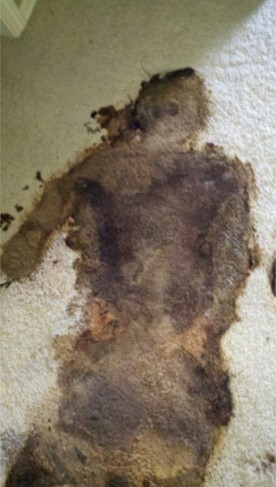
Human decomposition begins almost immediately after death, approximately 4 minutes. Once the heart stops beating, blood flow ceases and cells undergo autolysis. Our commensal microbes, critical to health during life, turn against us after death and start consuming us within. The temperature of the microenvironment can also play a role in the rate of decomposition.
Human decomposition will increase at temperatures above 68ºF and slow down at temperatures below 68ºF. Human body fluids are and should be a concern to Forensic Operators® remediating any microenvironment associated with unattended death and human decomposition. In any average adult human body, there is between 1.2 and 1.5 gallons of blood and in an average 200 lb human body, there are approximately 120 lbs of bodily fluids. They are going to go somewhere.
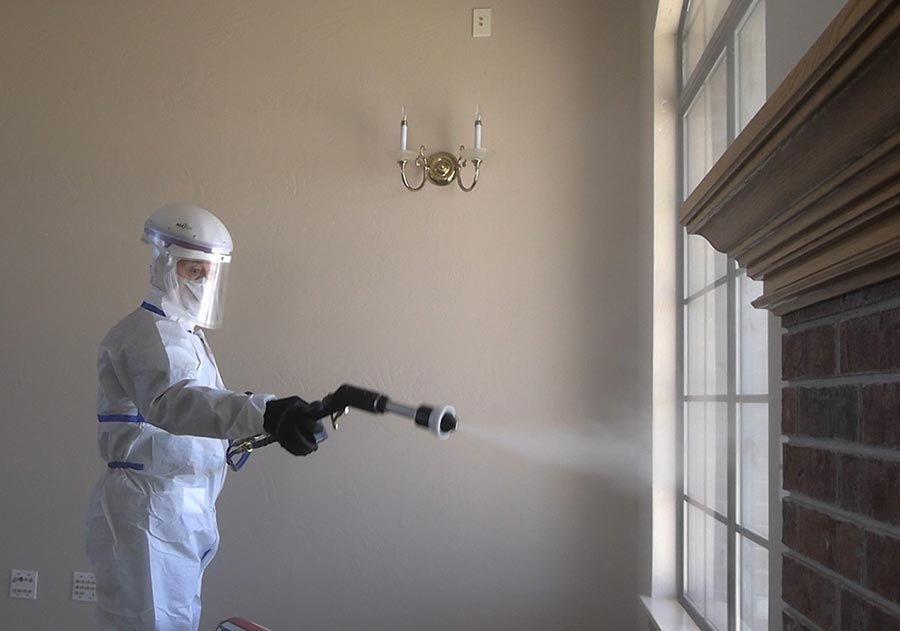
Pre Ops:
The Prime Directive of the Microbial Warrior® System of Forensic Restoration is SAFETY! Safety for the team of Forensic Operators® conducting decontamination and abatement and the safety of all future inhabitants of said microenvironment. PPE for the forensic operator should consist of two pair of medical grade nitrile gloves with a heavier mil exterior glove that extends up the forearm. Respiratory and eye protection is necessary.
The Microbial Warrior® System uses the MaxAir Powered Air Purifying Respirators (PAPRs) systems for both safety and comfort of the user. Unattended death projects can lead to long hours and days, so the safety and comfort of team members should be a paramount concern for any team leader. Exterior disposable booties or shoe covers that can be doffed before leaving the operation zone to prevent cross contamination should also be utilized.
Critical Incident Data:
This consists of the Who, What, Where, When, and How, questions that are asked when taking the initial call. These are the same questions that all the great detectives like Sherlock Holmes have asked. We just leave off the Why’s. The Why’s on any loss of life forensic restoration project are best left to Law Enforcement and the Judicial System; that being said:
Who – Who are you talking to? What is their relationship to the incident? Family, friend, property owner or manager? Insurance agent or adjuster?
What – for the purpose of the article, the “What” is an unattended death.
When – To the best ability of your contact person, when did the deceased pass and how long before discovery? Remember, human decomposition begins approximately 4 minutes after death has occurred and at 72 hours, in temperatures above 68º, we are crossing over into Advanced Human Decomposition.
Where – Where did the incident occur? In a residence? A business or government building? Was this on ground floor, second or third floor (you get the picture)? Was it in a basement? What are the flooring materials? What are the subfloors? Is there central heat and air (HVAC) running, water and electricity?
How – Remember, this will fall into one of the four forensic categories of death: Homicide, Suicide, Accidental, or Natural and having this knowledge is extremely valuable. An unattended death from natural causes at 2 weeks before discovery is visually different than a shotgun suicide at 2 weeks and because of kinetic energy, creates a larger debris field.
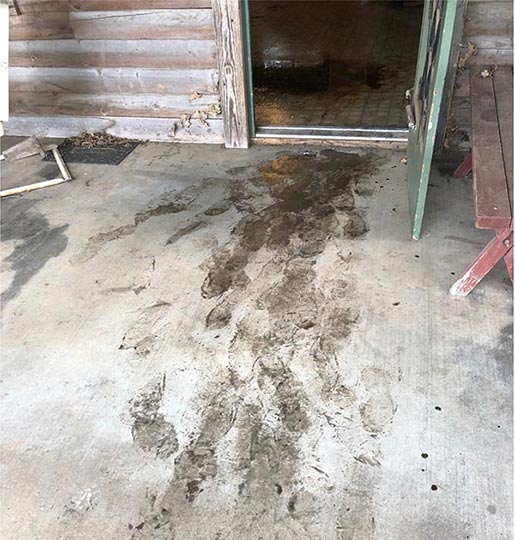
Variables:
Cross Contamination
This is the transfer of biological materials such as body fluids from one area to another. Due to the mechanical action of tracking, it is scientifically proven that transfer occurs for 29 steps. The average human stride is 2.5 feet. 29 steps x 2.5 ft=72.5 ft in every direction from where the deceased lay is a minimum that must be cleaned and disinfected. Cross contamination commonly occurs from first responders but can also be attributed to family and friends and in the case of homicides, even the perpetrator.
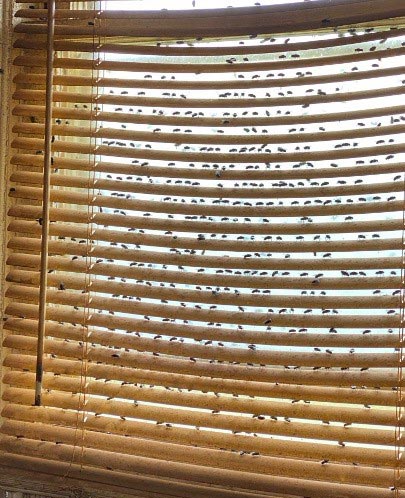
Cross Bio Contamination
Flies are a key consideration on any unattended death project; they are vectors transferring bacteria and pathogens from one area to another. Blow flies (Calliphoridae) and flesh flies (Sarcophagidea) cue off decomposition odors and can arrive mere minutes after death to oviposit, or lay eggs, in the body. Another reason for cross bio contamination is pets. Left alone with the deceased, without resources, the loyal companion dog or cat may now become a scavenger. Dining on and defecating the deceased, pets will also transfer bodily fluids and bacteria throughout the microenvironment.
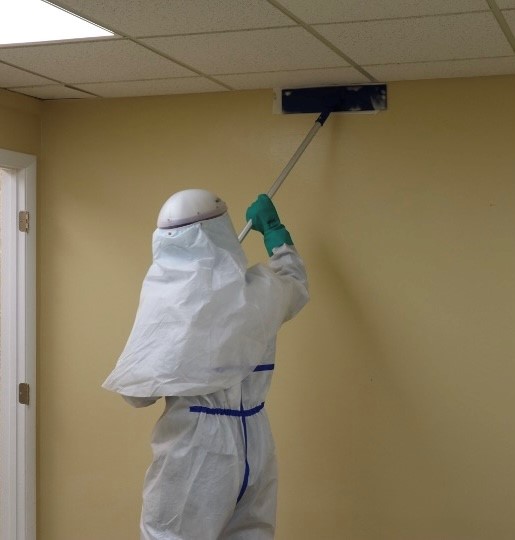
Odors
The internal microbes responsible for early stages decay are largely Anaerobes. Anaerobic digestion of tissues and molecules results in the production of Volatile Organic Compounds (VOC’s) including cadaverine and putrescine, which provide the characteristic smell of rotting flesh. Polysulphide VOC’s have foul onion-like odors. Other compounds include Indole and Skatole, which smell like feces and Phenol, which is sickly and sweet, and Hydrogen Sulphide gasses that smell like rotten eggs.
The odors associated with human decomposition trigger our disgust response, an important evolutionary mechanism that keeps us safe from eating spoiled food. The theory that bad air or odors can make a person sick was known as the Miasma Theory and was eventually abandoned by scientists and physicians after 1880, replaced by the germ theory of disease.
There is nothing in an odor associated with human decomposition that is going to make you sick, however, the source of the odor, bacteria, can. The World Health Organization has stated that odor is not a contaminate. If you have an odor, you have a source. Get rid of the source, in this case odor causing bacteria and you will get rid of the odor.
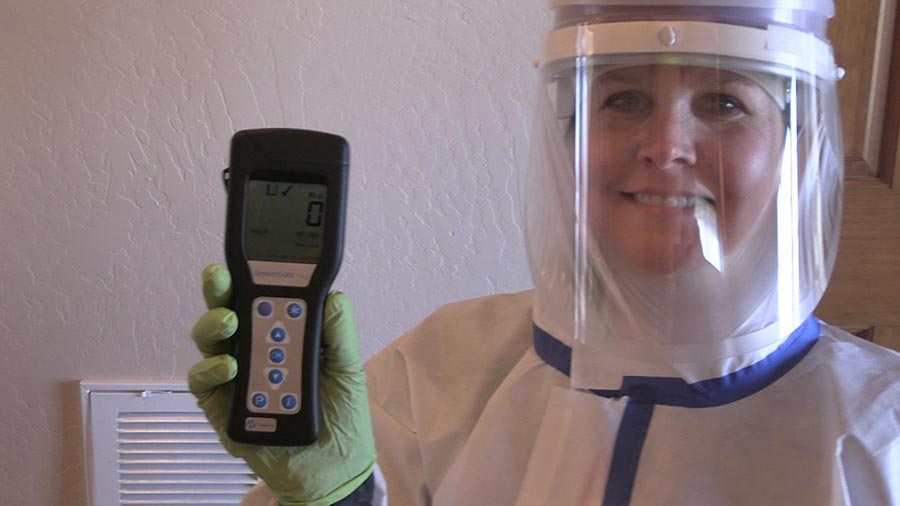
Operations:
Site Assessment
The purpose of the site assessment is to determine the scope of work, take photos and measurements. Record any safety issues and establish an operation, transition, and clear zone. Once that is done, it is recommended to take and record Adenosine Triphosphate ATP meter readings to show the level of microbial activity and determine a baseline of hygiene throughout the microenvironment. Next would be the application of an EPA Registered Hospital Grade Tuberculacidal Disinfectant with a 6-log kill, proven to kill both gram-negative and gram-positive bacteria and inactivate both enveloped and non-enveloped viruses for a pathogenic knockdown thus creating a safer working environment for the team of Certified Forensic Operators®. A load reduction of all the gross amounts of visible contamination will be necessary before detailed Forensic Cleaning can begin.
Cleaning
A former director with the EPA, Dr. Michael Berry, in his book ‘Protecting the Built Environment’ writes, “The longer the source of odor (the corpse) remains at the scene, the greater the emission of odorous VOC’s and the more intense the odor. Also, the longer the body decomposes, the more feeding of the microorganisms there are. As microorganisms increase, they are more likely to contaminate the surrounding environment. Disinfect and clean all surfaces.” (Note: Today we know that surfaces must be cleaned prior to the application of a disinfectant. You CANNOT disinfect a dirty or contaminated surface.)
Cleaning can be defined as removal of soil both visible and invisible. Microbial Warrior Forensic Cleaning™ defines as the removal of microbial and pathogenic contaminants to prepare surfaces both vertical and horizontal for professional disinfecting. After all surfaces have undergone forensic cleaning, a second set of ATP scores should be obtained prior to professional disinfecting.
Decontamination
Professional disinfecting is the application of an EPA Registered Hospital Grade Tuberculacidal Disinfectant with a 6-log kill, proven to kill both gram-negative and gram-positive bacteria and inactivate both enveloped and non-enveloped viruses. The EPA has no guidelines for the disinfecting of textiles and hygroscopic materials. Textiles and soft goods that have undergone visible contamination should be noted and with client approval, properly disposed of as medical waste. Carpets and pads should be disengaged and properly discarded. If the sub floor is wood and has become contaminated from blood or Other Potentially Infectious Materials (OPIM), it shall be removed for further inspection. If the framework of the structure has become contaminated, it will be necessary to clean and sometimes seal if removing the contaminated framework would compromise the integrity of the structure.
If body fluids have migrated under a wall and contaminated the adjoining room, the wall must be opened up for cleaning and disinfecting. If the seal plate is on a load barring wall, clean the best that you can, follow up with 20% hydrogen peroxide, allow to dry and then apply a sealant. If the subfloor is concrete, it is highly advisable to wet wash using the hot water extraction method at temperatures above 200º. Do not attempt to clean visible or other body fluids initially with hot water. Start with cool water and gradually increase temperature. Blood is a protein, like an egg, and when subjected to heat, proteins coagulate.
Once the visible contaminants are removed, now increase water temperature to surpass 200º and you have increased your proficiently by over 3000%. Now that all surfaces, both vertical and horizonal, have undergone forensic cleaning, ATP testing and professional disinfecting, it is time to clean and decontaminate the HVAC unit utilizing the NADCA (National Air Duct Cleaners Association) Source Removal Method. For decontamination air ducts, this author has seen great results from the use of Positive Air.
In conclusion, remember: If it cannot be successfully cleaned and disinfected, it needs to be treated and properly disposed of.
- The Prime Directive is Safety
- There is between 1.2 and 1.5 gallons of blood in a human body and over 120 lbs in a 200 lb. human body and they are going somewhere.
- Flies are vectors and spread bacteria and disease
- Transfer of bodily fluids happens for at least 72.5 feet
- According to Dr. Michael A. Berry, PHD and formerly with the EPA, ALL SURFACES MUST BE CLEANED AND DISINFECTED.
Obtaining training in Forensic Restoration® and following some of the information in this brief article will help in taking a microbial hostile environment and making it a safe and hygienic environment. The author would also like to thank Dr. Jennifer DeBryun, University of Tennessee Knoxville, a true professional and colleague.
Remember these incident sites can be taxing. Constantly check on the welfare of your team and never forget to take time to be kind to yourself.
Train Hard, Work Safe, and Walk in Beauty.
Looking for a reprint of this article?
From high-res PDFs to custom plaques, order your copy today!





